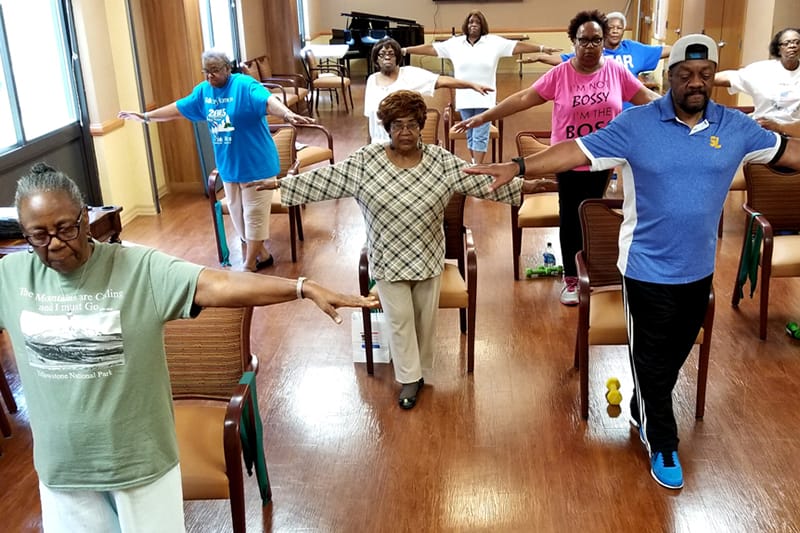Starting with our first stumbling steps, falls are a part of life. So much so that getting back up and dusting ourselves off is a point of pride. But that part gets harder and harder as we get older, and the repercussions of falling more dangerous.
One in four people over age 65 fall each year. In 20 percent of those falls, a head trauma, fracture or other serious injury occurs as a result. An accidental trip or temporary loss of balance can happen. But often, falls are caused by the effects of aging and more serious underlying health issues.
What’s causing my poor balance and frequent falls?
Many things. There usually isn’t a single factor that contributes to balance issues or falls. It’s a combination of declining health, lack of physical activity and tripping hazards around the home. Once you reach senior citizen status, you’re more likely to fall down due to:
- Poor balance or strength – Overall physical fitness plays a big role. Sedentary lifestyles or inactivity due to the fear of falling cause you to lose strength, balance and flexibility.
- Impaired vision – Even a slight loss of sight makes it more difficult to spot and avoid obstacles in your path.
- Foot and ankle disorders – Arthritis, vascular disease, reduced range of motion, toe deformities, bunions, chronic pain and other conditions limit strength and control of your feet.
- Vestibular disorders – The organs in your inner ears control your balance. When something’s off, you suffer dizziness, vertigo or balance issues.
- Postural hypotension – This condition is a form of low blood pressure that makes you dizzy when you stand up from sitting or lying down.
- Vitamin D deficiency – This important vitamin improves muscle function and strength. A lack of vitamin D can stem from a poor diet or just not getting out in the sun as much.
- Side effects of medications – All prescriptions have side effects. When you take multiple medications to manage your health, the mixture can cause even more impairment issues.
Additionally, if you’ve fallen in the past year, feel unsteady when standing or walking or even just worry about falling down, you’re at an increased risk. And you should think strongly about getting a proper assessment from a physical therapist.
Physical therapy? How does that help prevent falls?
A physical therapist will take you through a functional assessment to check your strength, gait and balance. Then, we’ll discuss if you’re at a low, moderate or high risk for falls and design an strength and balance program just for you.
That program will surely include exercise. It’s one of the most successful fall prevention strategies. Studies show that even if you do nothing else, exercise reduces your risk of suffering a fall-related injury. Your individual exercise program might include:
- Community-based activity – Groups and classes are a great way to get exercise. If you have a low risk of falls, getting out and active in your community could be enough. Any activity that builds aerobic endurance, strength and balance is beneficial. There are even local programs designed specifically for fall prevention.
- At-home exercises – Range of motion exercises, stretching, strength training and balance activities can be done in the comfort of your own home if you have trouble getting around or aren’t interested in community activities.
- Targeted strength and balance training – A more structured exercise regimen under the supervision of a physical therapist may be necessary for people with moderate and high risk of falls. Leg strengthening and balance exercises that systematically target the areas where you lack function are proven to help.
Half of all falls occur inside the home. So even if you’re active and exercise regularly, there’s still a risk from normal, everyday hazards like wet surfaces, poor lighting, or loose cords and rugs. Inspect your home for these hazards and change or remove them from your house to help prevent falls.
The good news is that there are many things you can do to prevent a fall and avoid more serious injury. If you’re concerned about your balance, talk with your primary care provider or consult with a physical therapist to find out what’s causing your unsteadiness and find ways to stay on your feet.
Source:
Photo from the National Council on Aging


